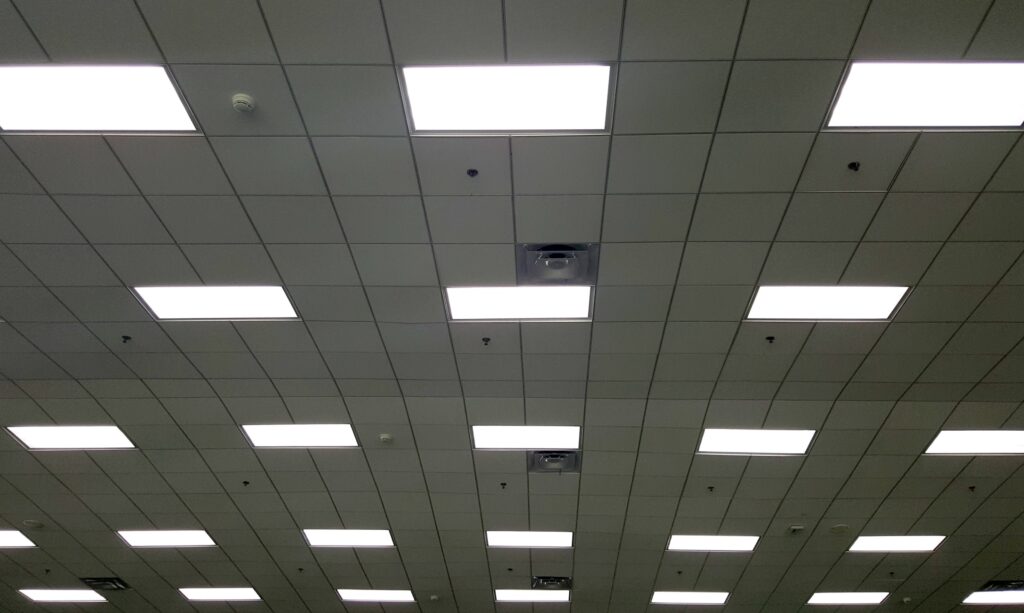Designing the New Hybrid Office with Neurodiversity in Mind

Can companies make their office layout truly welcoming for all employees — both neurodivergent and neurotypical? As America gears up for a return to the office, now is the perfect opportunity to create an office that works for everyone.
It’s interesting that many companies, prior to the pandemic, were remodeling their office spaces to reduce the quiet spaces in their environment. Out went the frequently maligned cubicles; in came “group spaces” with minimal privacy. Workers got lockers for personal items, just like high school! The reintroduction of open-concept design forced people into common areas to work without regard to a person’s need for privacy, personal effects, or tolerance of sensory stimulation.
The new “open” design was a response to what company leaders felt Millennials wanted in their work environment. However, they did not consider the needs of introverts, people in the spectrum, or people who were overwhelmed by too much sensory input.
Common Workspaces Are Exhausting

I’m married to an introvert who, starting a couple years prior to the pandemic, came home exhausted after work every day. His company had eliminated all personal workspaces and all cubicles in favor of common workspaces, lockers, and group desks. He hated the updated office environment. To get deep work done, he needed his own work-cave.
While an open space is appealing in the pages of a design magazine, jumping into a completely open layout is a mistake; being visible to others all the time can induce anxiety in many people. “Doubts flourish under fluorescent lights that expose every slight, every interpersonal hurdle,” a New York Times article on office design for neurodivergent employees noted. Office design must respect the needs of employees who are introverts as well as neurodivergent workers to have their own, low-sensory-stimulating space to work. For introverts and many employees in the autistic spectrum, that work environment is akin to torture.
Rather than increase productivity, it reduces productivity. Instead of supporting collaboration, it creates tension and stress for those whose working and learning preferences are for quiet, low-stimulation office environments.
Lockdown Has Changed Everything About Office Work

When the pandemic hit, people who relish that personal space and reduced stimulation were able to work from home. My husband couldn’t be happier working alone in his work-cave, interacting with colleagues via Microsoft Teams (with the video off), phone, or chat. He hopes to never have to go into the office again.
What does this mean for workers who must return to those open-design office spaces? As companies expand their diversity efforts to include neurodivergent employees, they need to consider ergonomics that go beyond how we are sitting or standing at our workstations.
The science of ergonomics encompasses more than the distance between your eyes and the computer screen. “It involves designing workspaces in such a way that they truly fit the needs of those who work in them,” an ARC Alliance post explained. “Thus, it takes into account various disciplines, including anthropometry, biomechanics, and applied and social psychology. It also focuses on environmental factors that can promote (or wrest from) comfort in a workspace. These factors include noise, light, heat, cold, hearing, vision, sensations — factors which can be determinative indeed of both comfort and work performance, for those with autism.”
Sound/Noise Is A Problem

For many workers, large open spaces without walls create a cacophony of noise and distraction for neurodivergent employees with ADHD, autism, or sensory sensitivity. To get the best out of neurodivergent workers we need to consider office design that respects employees’ need for a quiet, less stimulating space.
Have you ever been to a restaurant in a renovated mill yard where the ceilings are high, the floors are concrete, and the walls are wood or brick? Many people seem to love that office environment; however, for people with sensory sensitivities, central auditory processing disorder, autism, or ADHD, these environments are incredibly uncomfortable.
If you’ve been in that type of office environment and felt that it was just too loud and noisy, imagine that there are employees who feel that way when they’re trying to work in large open corporate spaces. It’s a death sentence for productivity.
Harsh Lighting Affects Overall Health

The fluorescent lighting used in most workspaces can lead to a host of difficulties for employees, including migraines — not to mention the distractions of flickering or buzzing lights. Instead, diffusing these harsh lights and introducing more natural lighting into the workspace jives with the body’s natural circadian rhythms, indicating to the brain that it’s time to be awake and alert.
Studies have also theorized that natural lighting improves visibility, health, mood, and focus. Even if you can’t increase the natural light in your office, you can approximate natural daylight by using full-spectrum lighting as well as increasing blue lighting (natural daylight includes a lot of blue light). One option is to cover fluorescent lights with blue Fluorescent Tube Sleeves.
Office Design Can Accommodate Personal Needs
“It is important for companies to be aware of possible needs as well as to have open communication with their employees,” according to the ARC Alliance. Some people with autism need space to rock or swing since it relaxes them; others are soothed by touching their back to a wall; and some others do need open space. Design that can accommodate the individual needs of employees can make all the difference in terms of comfort within the office.”
Open space design can affect the eye and ear. But what often is not considered is our sense of smell and touch: Even the scent in the air and the feeling of a chair or desk surface can impact our work comfort level.
Consider that there are hotels that develop and trademark a specific scent to permeate their reception area. When people enter the lobby, that scent provides an experience that is remembered as part of that hotel brand.
“The Sheraton Carlsbad Resort & Spa uses a bergamot, jasmine and freesia scent, designed to evoke warm memories, relax the body and calm the mind,” a Premium Scenting post reports.”
Have you ever been to a hotel where the scent conjures up feelings of nausea? Or causes a migraine? I have, and I won’t go back to those hotels. Sometimes, scent is used in the guest rooms because it is believed that spraying perfume on the rug is better than the scent of the previous occupant. For me, when I go into a hotel room that has a strong scent, my first reaction is to want to check out. I usually call down to the front desk and ask them to remind housekeeping not to use any sprays in my room during my stay.
Now, consider the office environment again: How might the scent of the workspace impact employees?
Communicate Before Remodeling!

My husband once came home from work on a Friday and said that he would be home for the following week. When I asked him why, he said, “Well, they’re remodeling our workspace so they want us to just work at home for a week so that they can get that done.” I asked him if he knew what they were doing. Of course, he did not.
Whoever was on the design committee hadn’t considered talking to the employees that would be using that space. This lack of communication is one of the places where brilliant people in charge of designing office space disconnect with the employees who must work in that space.
Communication is critical when making changes to a office environment, no matter how small or drastic.
As employees return to the office — whether on a hybrid schedule or full-time — companies need to consider their neurodivergent employees’ needs when deciding where they’re going to work. Some workers feel trapped in quiet cubicles; they need the open space and movement of an open plan, and that’s great for them. For others, an open design is akin to the House of Horrors.
Take the time to communicate with all your employees now, before a return-to-work plan is implemented. Get their feedback on the kind of workspace they’d like to have. Do they prefer a more private cubicle? Would they like more open, collaborative space? Or a mix of options? Work with the HR department to communicate with and create a means for employees to give honest feedback, whether through a survey or suggestion process.
The results will be illuminating and could lead to a new way of thinking about how dedicated workspaces, designed for individual needs and preferences, can boost employees’ comfort, morale, and productivity.
Definitions as Referenced in this Article:
The following definitions were created by Nick Walker, of neurocosmopolitanism.com.
Neurodiversity is the diversity of human minds, the infinite variation in neurocognitive functioning within our species.
Neurodivergent, sometimes abbreviated as ND, means having a brain that functions in ways that diverge significantly from the dominant societal standards of “normal.”
Neurotypical, often abbreviated as NT, means having a style of neurocognitive functioning that falls within the dominant societal standards of “normal.”
Neurominority, any group, such as people with autism*, which differs from the majority of a population in terms of behavioral traits and brain function
*preferred language … such as autistic people, which…
CLICK HERE to visit the articles page.

Download Neurodiversity in the Workplace! – Free!
Bring Susan Fitzell, M.Ed., CSP
Top Neurodiversity Speaker
To YOUR Organization!

